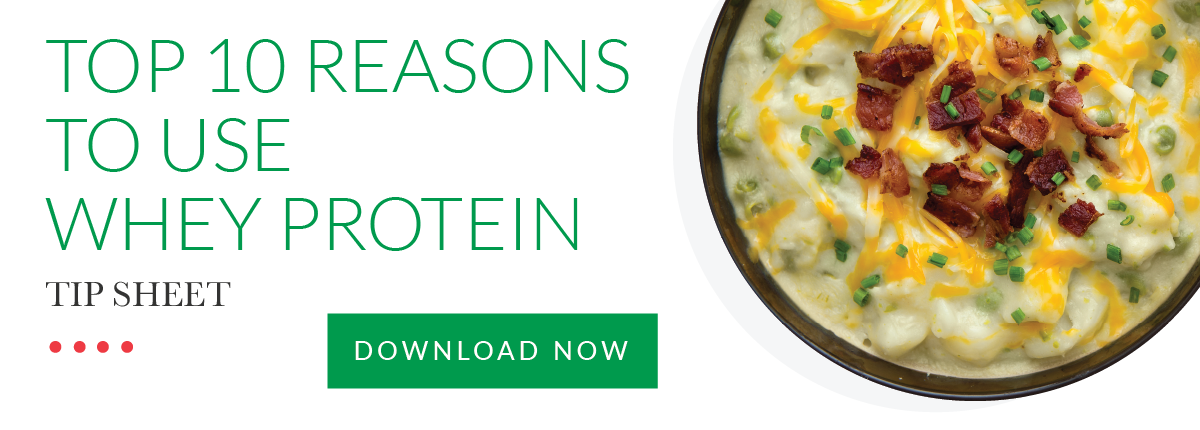
Some of the food trends named in the top 10 list for 2022 — as compiled by Datassential, a supplier of trends, analysis and concept testing for the food industry — aren’t likely to become staples in food manufacturers’ formulations anytime soon. Black salt in your Bechamel? Asian rum in your Ravioli?
Maybe not. Truth is, there’s a problem with most “on-trend” ingredients. Many of them fall to the wayside as quickly as they rose to the top, and any products featuring them do, too.
What most food and beverage manufacturers really want are ingredients that have staying power and can be a part of their product line for years to come, not just a passing fad. That’s because research and development, marketing and other aspects of reformulating or launching a new product are expensive. Getting a return on investment can take years.
There’s something to be said about tried-and-true ingredients that have stood the test of time and continue to be workhorses in a variety of applications. That’s the case with functional whey protein. Innovative manufacturers and top chefs alike use it to both complement other flavors and stand on its own in everything from clean-label desserts, snacks and frozen entrees to sauces, dips, dressings and more.
Explore what sets functional whey protein apart, why it ranks highly among consumers and ways to incorporate this innovative ingredient into food products.
RELATED: 5 Food Formulation Trends With Staying Power!
Popularity of Whey Protein vs. Alternatives
While functional whey protein may not make the list of the latest quirky trends, it remains high on the list of favored ingredients by consumers and manufacturers. In the end, sales of a product will tell the story of how “on trend” it truly is.
What do those sales reveal? Whey protein is a preferred protein source by most consumers, even more so than plant proteins despite their rise in popularity. And staple products containing whey protein far outnumber and outsell plant-based protein products by a long shot.
In the end, whey protein products are preferred for flavor and texture by the majority of consumers despite the marketing hype of some protein alternatives, and the lower price point doesn’t hurt either. When consumers are educated about the superior sustainability of whey protein vs. plant proteins, they’re even more likely to embrace whey foods.
The Various Types of Whey Protein Concentrate
All whey protein is derived as a result of the traditional cheesemaking process. However, it’s vitally important to make the distinction between the various forms of whey when considering its use in a formulation.
To most, the term “whey protein” conjures images of bodybuilders and protein shakes. However, that type of whey protein supplementation — also known as whey protein isolate (WPI) — tends to fail when incorporated into most food formulations.
This is partially due to the highly processed way in which most WPI is made, which can degrade its desirable properties and compromise its structure. Commodity WPI’s use in a food formulation will likely result in viscosity breakdown, changes in flavor profiles, gritty texture, separation, an unpleasant appearance and a host of other application issues.
Grande Ultra® whey protein isolate, however, is unlike commodity WPIs in that it remains stable at pH levels as low as 3.5 and is even used in clear beverages. Its clean, neutral flavor shines through without any turbidity or sediment formation, and its high protein levels boast all the essential amino acids needed to build muscle mass.
Grande Bravo® functional whey protein concentrate is a popular type of protein used in many creamy formulations. It is often used to reduce or replace high cost, high fat and calorie ingredients such as eggs, oil, heavy cream, cream cheese, milk, butter and other dairy products. The result is a more concentrated form of shelf- and freeze/thaw-stable protein that retains its desirable properties and functionality, and offers benefits such as a neutral flavor and superior water-holding abilities.
Grande Gusto® whey protein is specially formulated to replace cheese in applications like macaroni and cheese, nacho sauce, queso sauce and other cheese-based formulations. Because of its enzymatic properties, it allows formulators to reduce sodium without loss of flavor and maintain a velvety texture.
All Grande Custom Ingredients Group’s products are made using a proprietary ultra-filtration process with zero chemical modifications, allowing them to be labeled as “all-natural” and “clean label.” Their characteristics allow food technologists to maintain — and often improve — an application’s creamy mouthfeel, rich texture, intended flavor, pleasant appearance and consistent viscosity.
Integration into Formulations and New Product Development
Creative and forward-thinking manufacturers take advantage of the superior properties of all forms of whey protein powders and their ability to lower costs and maintain consistent textures, flavors and mouthfeel. Some examples of the types of applications using whey protein ingredients include:
- Cream-based soups, gravies and dips
- Cheese sauces and savory spreads
- Low-fat salad dressings, hummus
- Coatings and seasonings
- Baked goods, cheesecake, cookies and toppings
- Healthy snack foods and ready-to-eat meals
- Creamy beverages, powdered drink mixes, eggnog
- Clear protein sports drinks and beverages
- Frozen entrees and processed meats
- Ice cream, smoothies, shakes and frozen desserts
- Protein bars and cereals
- And the list goes on!
Take a look at existing formulations and those in product development and ask the question, “Is formulating with functional whey protein an option?” Chances are, the answer is “yes!”
Changing formulations isn’t as easy as replacing one ingredient with another. If you’d like to talk to our team of food scientists and explore how best to approach your specific formulation challenge, reach out to us. We’re here to help. And be sure to check out the Top 10 Reasons to Use Whey Protein below to see even more reasons to consider its use in formulations.




